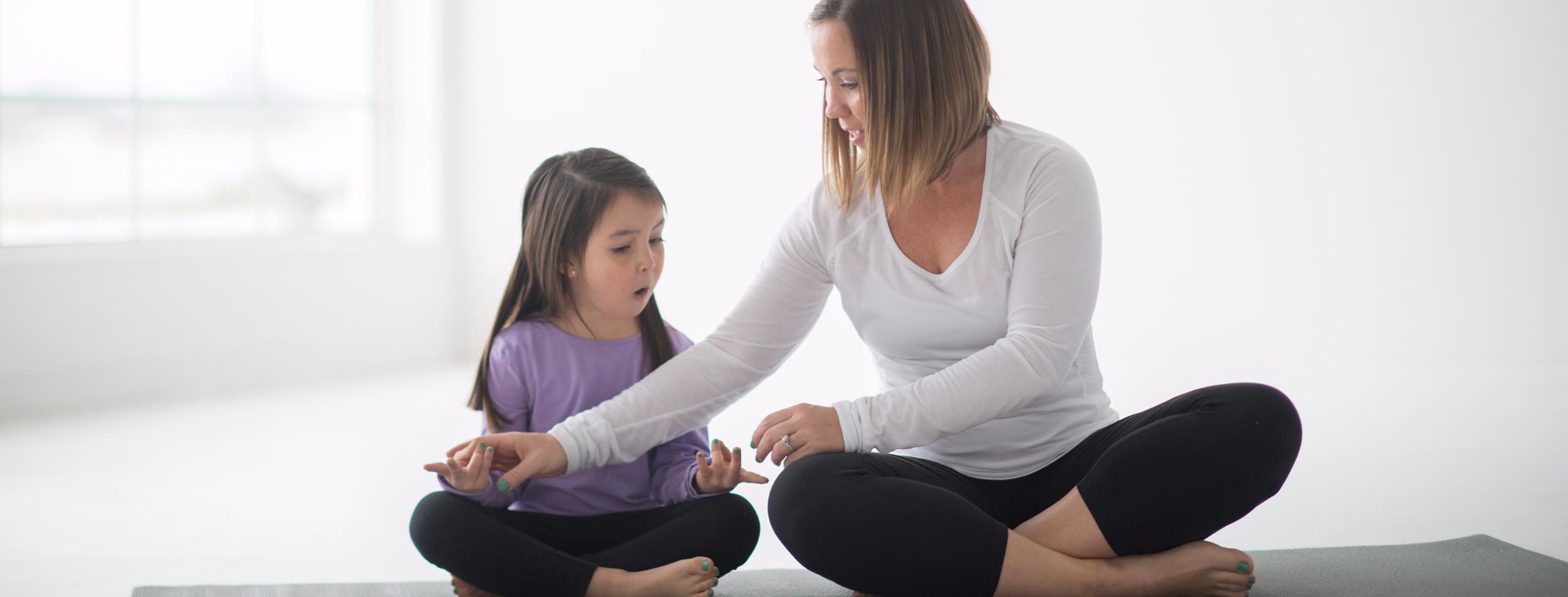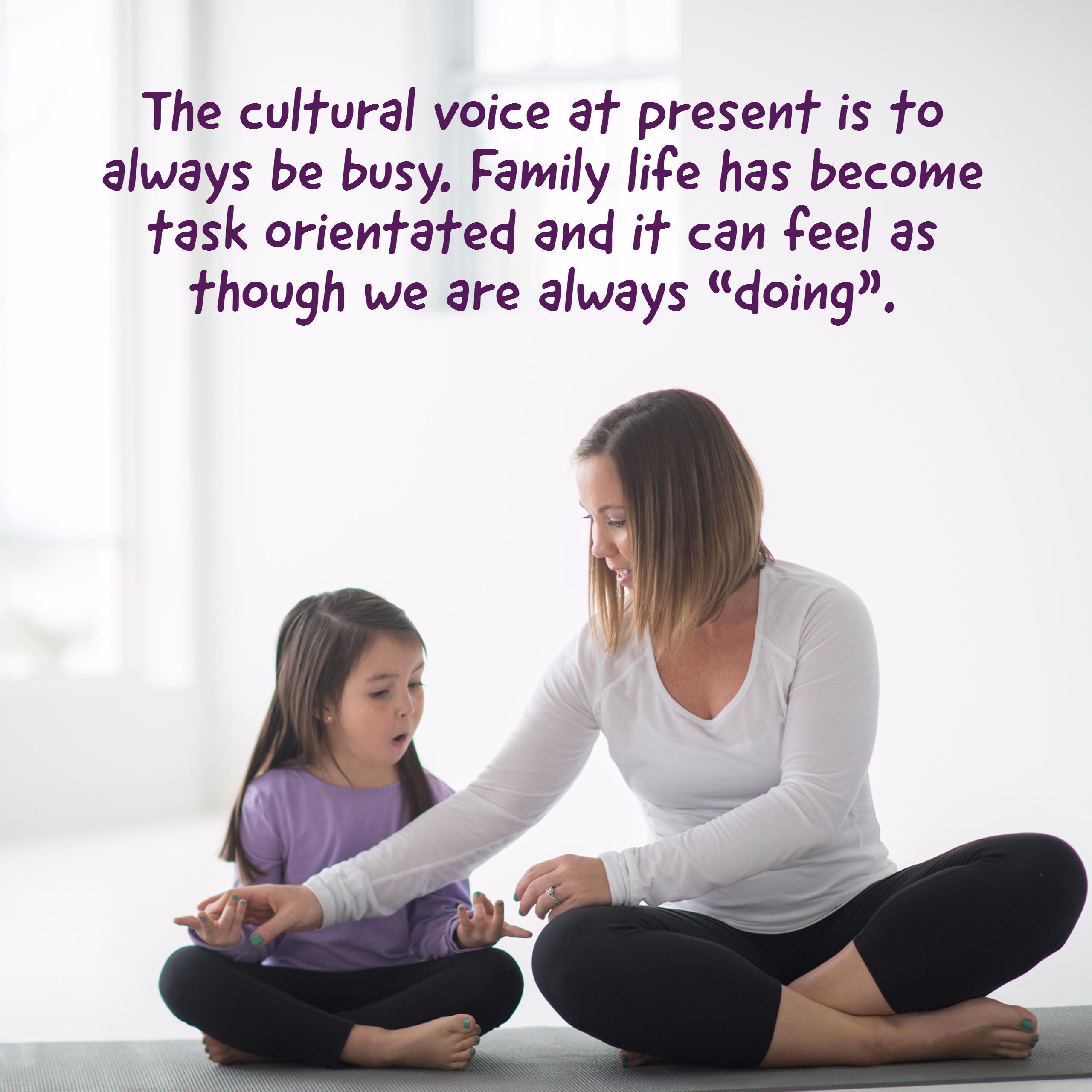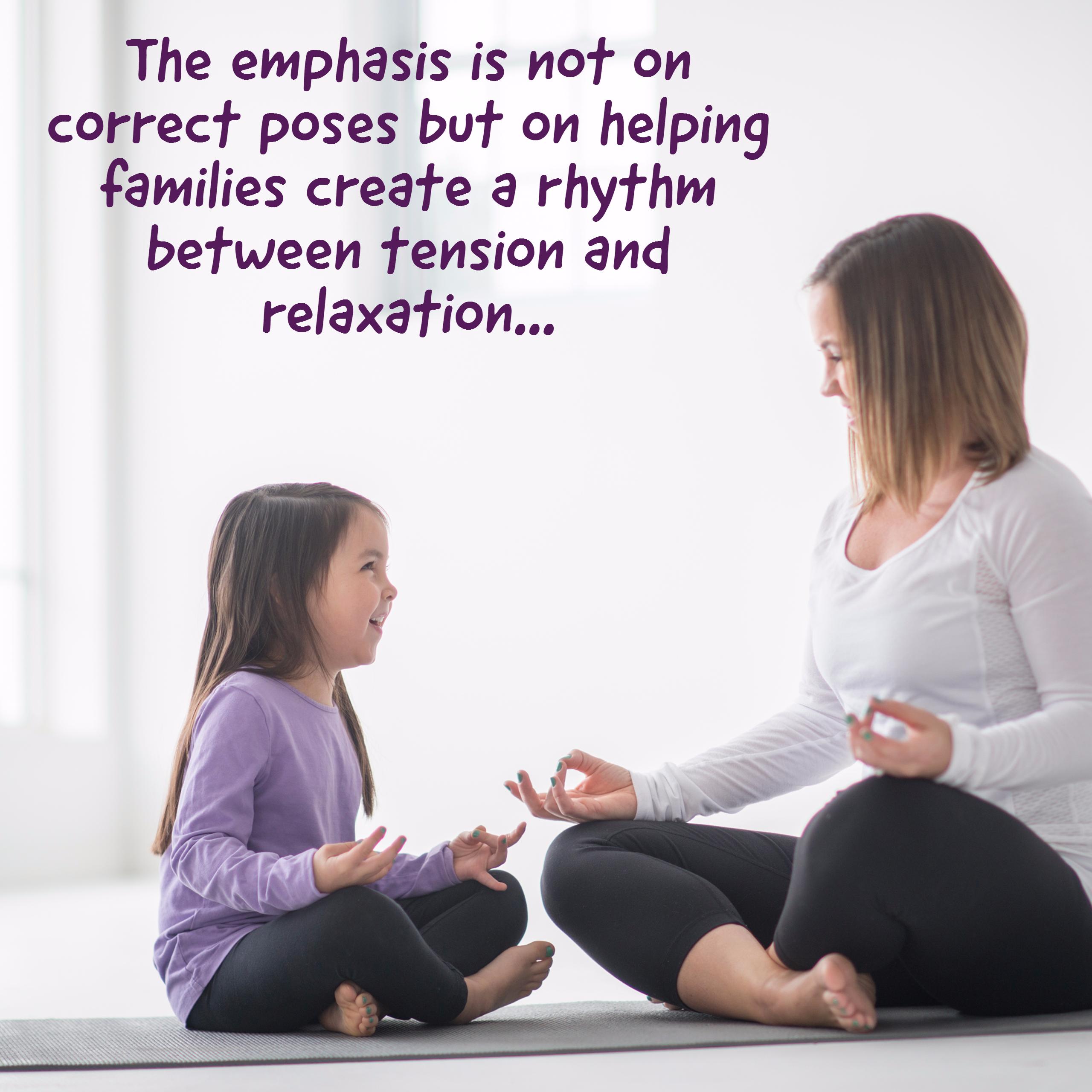
Family Yoga
The family yoga program at EACH was developed to provide a non-conversational approach to well-being, to support the integration between the mind and the body, to reduce the barrier between professionals and families, to encourage families to connect and have fun, improve relationships and body awareness.
 Our course is not yoga in the traditional sense. It is not done individually, the participation occurs in family groups. The family system can encompass parents, siblings, grandparents and carers. When describing family yoga in simple terms we invite families to think of and reflect about the busyness of family life to begin with. We encourage the challenge of putting aside one hour each week to actually experience fun together as a family, without the worries of routine, sport, homework etc. We also talk about some of the theories behind the program in that it supports families to work together which strengthens relationships and attachments within the family. It also supports the sibling relationship where we invite siblings to work together to navigate conflict and differences when attempting the different poses.
Our course is not yoga in the traditional sense. It is not done individually, the participation occurs in family groups. The family system can encompass parents, siblings, grandparents and carers. When describing family yoga in simple terms we invite families to think of and reflect about the busyness of family life to begin with. We encourage the challenge of putting aside one hour each week to actually experience fun together as a family, without the worries of routine, sport, homework etc. We also talk about some of the theories behind the program in that it supports families to work together which strengthens relationships and attachments within the family. It also supports the sibling relationship where we invite siblings to work together to navigate conflict and differences when attempting the different poses.
Mindfulness and Fun
The cultural voice at present is to always be busy. Family life has become task orientated and it can feel as though we are always “doing”. There is a lot of pressure on people to perform and constantly do better and better. We have deliberately created an opportunity for families to take the pressure off, come together and just be. We believe that this is absolutely fundamental for emotional and overall well-being. As Siegel (2007) writes, we can feel sometimes that life is repetitive and dull as we have a tendency to always focus on what we are doing. When this happens it can create a feeling of emptiness. When we start to become more mindful it really does wake us up from living a life on auto pilot. Siegel (2007) also comments that our ability to connect and feel compassion and empathy for others can increase when we become more mindful. Families that have experienced trauma, particularly due to family violence can perceive that relationships are not safe. Our family yoga course aims to create a safe space to show that relationships and connecting to others can be a positive and rewarding experience and does not need to feel dangerous or be feared. For some families, the ability to show affection and share love can feel confronting due to the vulnerability that it requires. Family yoga creates a sense of fun and is a non-threatening way to connect to others in the present moment. Playfulness is a safe way to connect in relationships (Hughes, 2007). Often in family violence, the mother has had to place all of her energy into protecting her children and keeping them safe. This can come at the cost of the attachment relationship. The constant vigilance required can impact on the ability to connect to the present moment and be fun and playful together as a family. A strong relationship between parent and child assists the child to co-regulate their internal arousal system and therefore is fundamental in terms of the child’s overall wellbeing.
We as facilitators focus on modelling to the group what a secure attachment relationship looks like through communicating verbally and non-verbally in a respectful tone, demonstrating trust in each other and being playful together.
Regulation and Trauma
As many of the participants have experienced trauma, our goal is to support them to regulate their arousal and control their own physiology. If the fight or flight response is always activated and they do not have interoceptive awareness then they can find it challenging to tune into their bodies and recognise their needs. They can also perceive danger to be everywhere and consequently become quite hyper vigilant. An inability to regulate your body and get a sense of internal safety makes it hard to connect with others.
 Trauma aware principles are therefore vital in the family yoga program. We invite participants to tune into
Trauma aware principles are therefore vital in the family yoga program. We invite participants to tune into
what their body may need and make choices. Making choices also allows them to feel a sense of control. Using a language of inquiry assists participants to change the relationship with their body and learn how to develop a tolerance for experiencing sensation (Emerson & Hopper, 2011). We coach participants to tolerate physical sensations for what they are – just sensations with a beginning, a middle and an end. We use techniques such as focusing on the breath, counting down and accepting the presence of discomfort knowing that it will end.
Creating rhythms is also important to assist the body after it has experienced trauma. We do this through individual exercises, family games and group activities. Once an individual has developed internal rhythms we encourage them to develop rhythms in the inter-subjective space through attunement and connection exercises. The emphasis is not on correct poses but on helping families create a rhythm between tension and relaxation, something families may then begin to become aware of in their day to day lives.
Finding as Clinicians
In our practice we have found that family yoga seems to be more successful in shifting family dynamics than family or individual therapy. In our thinking now, we see that family therapy has a place in relation to parenting education and talking to the families about values and working together. But we actually think the real shifts occur when working together in family yoga, as it is the ‘doing’ that really embodies theory into practice. In counselling we talk a lot about the theories that will help clients and we provide them with psycho-education but it is often a challenge to help them to shift from an intellectual understanding to embodying it and applying it to real life.
To be effective as a clinician in the program you need to be vulnerable and leave your ego behind.
We focus on genuine goodwill and congruency in our relationship as clinicians. After involvement in the family yoga program, we find that clients have so much more trust in us. They are able to open up a lot more and seem more willing to try things. We find that there is less resistance and feelings of being judged. Family patterns become quite apparent through objective observation in the group and families become quite curious about our observations after the program. This provides a lovely space for reflection and growth. Trust in professionals is not a given. Some people are afraid of being vulnerable and sharing with a professional, due to frequent negative experiences in personal relationships. We need to work hard to develop a secure attachment to facilitate trust in us. If we want clients to drop their defences and be vulnerable we need to become humanised in our approach. By removing the formal clinical language and just being present to them as people, we find the barrier between “us” as professionals and “them” as clients is broken down. We dare to expose our vulnerabilities in front of them. We laugh at ourselves and ensure that we are relatable. We can’t touch our toes, confuse our left and right sides, have fallen out of many poses and are frequently told that we have “dorky” dance moves. This is the essence of what works as we demonstrate an ability to connect to our authentic selves, while embracing our imperfections and relating to others. Viewing and treating the participants as “clients” can be disempowering. Yes, they may have experienced vulnerabilities but at the end of the day everyone has a story and a past. In family yoga, that story does not matter. We focus on the present moment and work to create a new narrative for the family that focuses on internal awareness, effective communication and strong relationships/connection with others. We invite the members of the group to take on leadership roles and focus particularly on building confidence in children. The group is free of rules – except for being respectful to each other and listening to your body. We don’t tightly control the session content either. It is important to be flexible and observe the needs of the group. The limited rules and flexible approach creates a sense of freedom. We aim to provide a space for families to freely be themselves with no judgement where they cannot fail. Unconditional acceptance provides an opportunity for families to connect to and find their authentic selves and re-write their family narrative.
References Emerson, D., & Hopper, E. (2011). Overcoming trauma through yoga: Reclaiming your body. California: North Atlantic Books. Hughes, D.A. (2007). Attachment-focused family therapy. New York: W.W. Norton & Company, Inc.
Siegel, D.J. (2007). A mindful awareness. The mindful brain (pp. 3-15). New York: W.W. Norton & Company, Inc.
